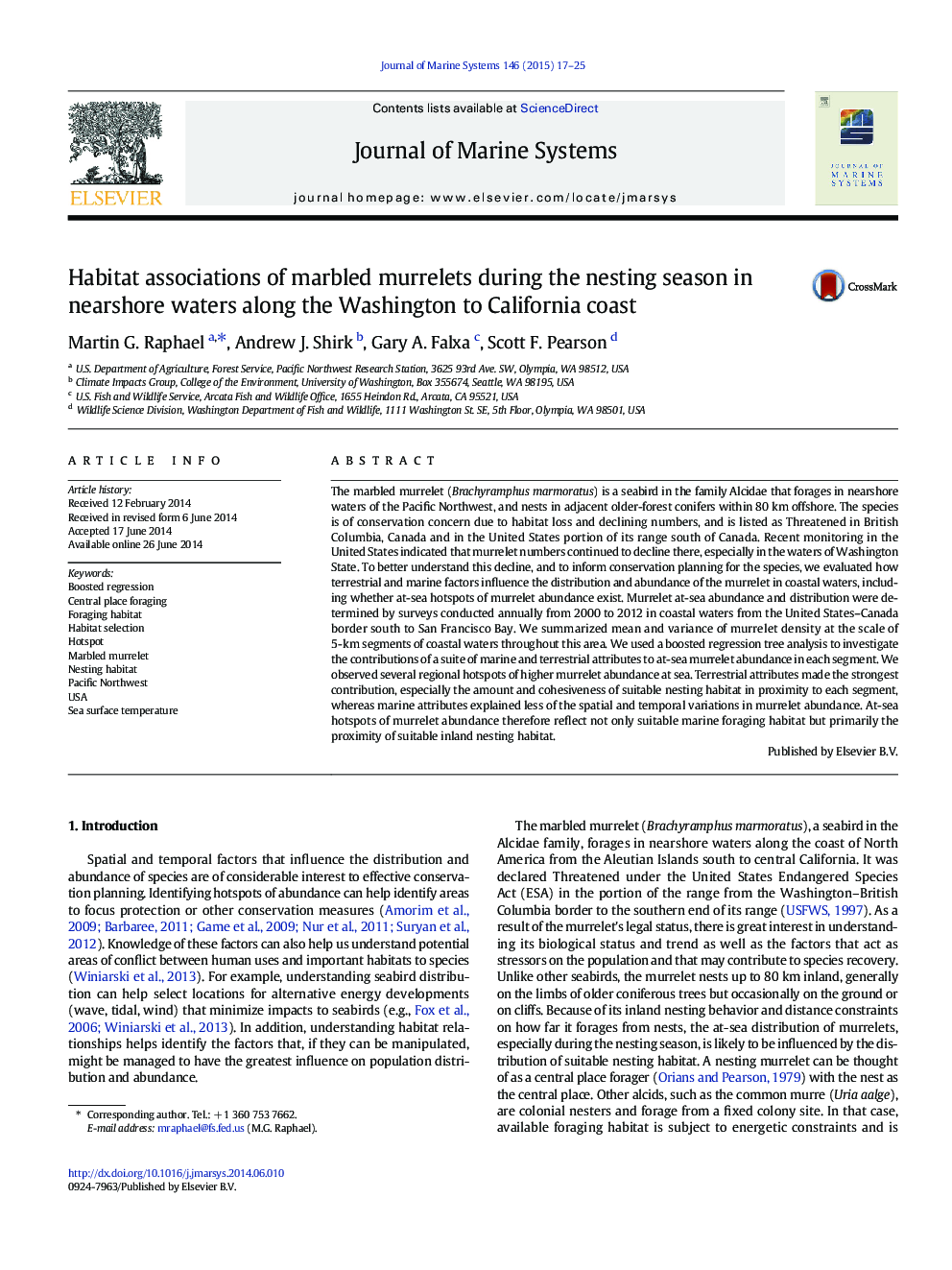| Article ID | Journal | Published Year | Pages | File Type |
|---|---|---|---|---|
| 4547977 | Journal of Marine Systems | 2015 | 9 Pages |
•Marbled murrelet density is highly variable along the Pacific coast but shows at least 3 “hotspots” of exceptional abundance.•The murrelet is a central place forager and its density is influenced by the amount and pattern of its inland nesting habitat.•We found that terrestrial covariates had a much stronger influence on murrelet density than marine covariates.•Model results suggest that conservation of inland nesting habitat is key to the species’ recovery.
The marbled murrelet (Brachyramphus marmoratus) is a seabird in the family Alcidae that forages in nearshore waters of the Pacific Northwest, and nests in adjacent older-forest conifers within 80 km offshore. The species is of conservation concern due to habitat loss and declining numbers, and is listed as Threatened in British Columbia, Canada and in the United States portion of its range south of Canada. Recent monitoring in the United States indicated that murrelet numbers continued to decline there, especially in the waters of Washington State. To better understand this decline, and to inform conservation planning for the species, we evaluated how terrestrial and marine factors influence the distribution and abundance of the murrelet in coastal waters, including whether at-sea hotspots of murrelet abundance exist. Murrelet at-sea abundance and distribution were determined by surveys conducted annually from 2000 to 2012 in coastal waters from the United States–Canada border south to San Francisco Bay. We summarized mean and variance of murrelet density at the scale of 5-km segments of coastal waters throughout this area. We used a boosted regression tree analysis to investigate the contributions of a suite of marine and terrestrial attributes to at-sea murrelet abundance in each segment. We observed several regional hotspots of higher murrelet abundance at sea. Terrestrial attributes made the strongest contribution, especially the amount and cohesiveness of suitable nesting habitat in proximity to each segment, whereas marine attributes explained less of the spatial and temporal variations in murrelet abundance. At-sea hotspots of murrelet abundance therefore reflect not only suitable marine foraging habitat but primarily the proximity of suitable inland nesting habitat.
